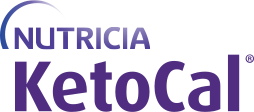Ella is 9 years old. She has an orange belt in tae kwon do and is very excited to be going to a new school for 3rd grade. The best way I can describe my daughter is that I wish everyone had the same approach to life and towards others as she does. She is optimistic, kind, and compassionate to anyone she meets. One would not expect such a positive or loving disposition from a child who has been through so much in such a short time.
Dravet Syndrome
We assumed Ella was healthy when she was born a hefty 8lbs 15ozs. She was very curious and social as an infant. Ella was around 10 months old when we realized something was very wrong. She had her first seizure during a nap. It lasted over 2 hours and required her to be intubated for 2 days. We were told it was due to high fever. We were convinced it was the last one she would ever have until she started having seizures several times a week. She had been intubated 4 times before we knew what we were dealing with. Ella was diagnosed with a genetic condition called Dravet Syndrome at 3 years old. It is a rare and catastrophic form of epilepsy that brings a host of medical complications ranging from global delays to chronic infection. It never goes away and it does not always improve over time.

A Ketogenic Diet
Ella had been prescribed several anti-epileptics with little to no noticeable seizure control. She was often in a drug-induced fog or extremely irritable. Her neurologist recommended we put her on a ketogenic diet. The decision to place Ella on such a restrictive diet was not one that was taken lightly. After researching, we felt overwhelmed and reluctant to try it because of the potential side effects involved (the most common side effects are digestive issues, although these can usually be managed under the care of a keto dietitian). We also knew that managing a ketogenic diet would be a time commitment, and we struggled with the idea that Ella would not be able to eat food other children could eat. I remember wondering how I was going to keep up with it. I worked full time and had Ella and her younger sister.
There were a lot of factors delaying us (my husband and I) from making the choice. However, we decided that we had more to gain by trying it. We knew that if it did not work, we could take Ella off of it and try something else. Fortunately, we met several families who had their children with Dravet Syndrome on a ketogenic diet who were experiencing fewer seizures. They shared their stories with us and it put us at ease.
Following a brief admission to the hospital to safely wean Ella onto the ketogenic diet, her dietitian sent us home with several recipes. Ella’s keto dietitian encouraged us to try KetoCal® products in to help us find some meal alternatives. KetoCal offered several tasty options for kids such as ready-made shakes (plain, vanilla or chocolate) and powder mixes that could be used in sweet or savory meals.
After 4 days of being on a keto diet, Ella used the bathroom on her own for the first time. Her speech and cognition improved dramatically, and more importantly she went 6 months without a seizure. It was the longest she had gone without one since 10 months old.
My daughter has been on a ketogenic diet for 5 and half years. Part of why keto has worked for Ella is that we make her a part of the process by empowering her as much as possible. We create new recipes often, based on her requests. This gives her a sense of control over what she eats. Seeing Ella smile after she tastes something new is a huge pay off.
Advice for Other Parents
If you have a child with Dravet Syndrome or intractable epilepsy, please consider the ketogenic diet as a low side-effect option for managing seizures. The diet may not be right for everyone, but it works wonders for so many with uncontrolled seizures. Please do not hesitate to speak with your neurologist about having a consultation with a keto dietitian, or even reaching out to members of the epilepsy and ketogenic diet community. There are many groups on Facebook where you can connect with other families who have tried a ketogenic diet, such as:
You can also find a ketogenic diet provider near you here: https://myketocal.com/kdcenters.aspx.
-Dana
Nutricia compensated me for my time to write this blog, however, my opinions are my own.
KetoCal® is a medical food for the dietary management of drug-resistant epilepsy and must be used under medical supervision.
The ketogenic diet for epilepsy should be used under medical supervision.
Please note that this is one family’s report of their experience with the ketogenic diet and may not be the experience of others. Individual results will vary. Please discuss the potential benefits of the ketogenic diet with your healthcare provider.
